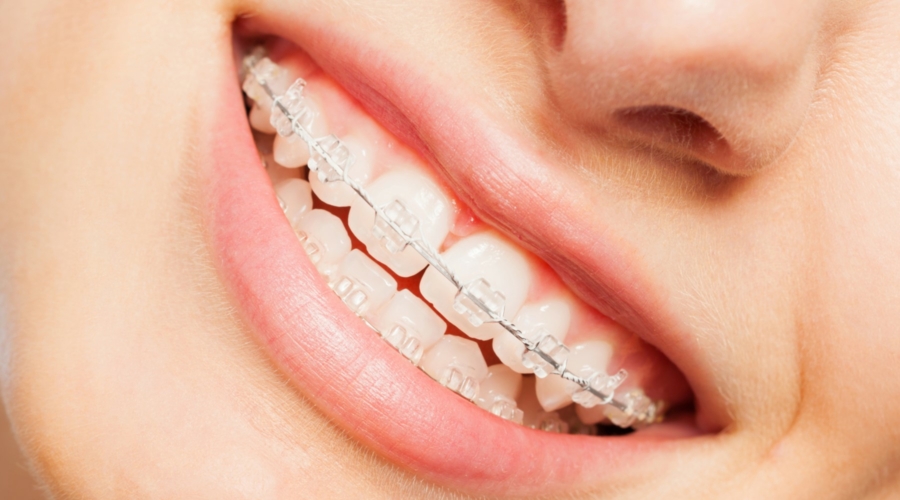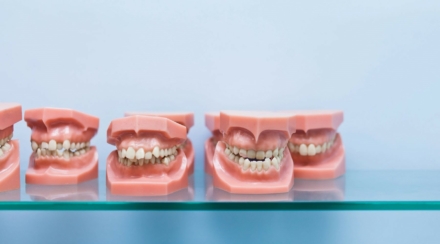The prevalence of crooked teeth, medically known as malocclusion, has prompted a growing interest in understanding why teeth are crooked and the best methods for correction.
From traditional braces to clear aligners like Invisalign, orthodontics offers a range of solutions for those seeking to improve their dental health and aesthetics. The importance of addressing crooked teeth goes beyond cosmetic concerns, impacting oral health and overall well-being.
Orthodontic treatment plays a crucial role in correcting misalignments and contributing to better dental health.
Orthodontists specialize in diagnosing and treating such dental irregularities, offering customized treatment plans that cater to the unique needs of each patient.
By highlighting preventative measures for children, the article aims to inform and empower readers with comprehensive insights into managing and rectifying crooked teeth, ensuring a holistic approach to oral health.
Understanding Crooked Teeth
Understanding the origins and contributing factors of crooked teeth is crucial for effective prevention and treatment. Here are some key insights:
- Genetic Factors: Many cases of crooked teeth are inherited. Genetic predispositions affect jaw size, jaw shape, and the development of teeth and palates, leading to conditions such as tooth crowding, overbites, and underbites [1].
- Oral Habits and Conditions: Conditions like plaque buildup, gingivitis, and periodontal disease weaken dental health, while habits such as thumb/finger sucking and tongue thrusting from an early age can misalign teeth [1][2].
- Early Loss of Baby Teeth: When baby teeth are lost too early, adjacent teeth can drift into the empty space. This movement can disrupt the alignment of incoming permanent teeth, leading to crowding of the teeth [6].
- Dietary Influences: Historical shifts in diet have impacted our dental structure. Our hunter-gatherer ancestors had larger jaws from chewing raw, hard foods, which accommodated more teeth.
- 21st Century Diet: The modern diet, which consists largely of processed foods requiring less chewing, has led to smaller jaw sizes that struggle to accommodate all teeth properly, often resulting in crowding and misalignment [2][4].
- Dietary Deficiencies: Inadequate nutrition affects the overall health of teeth and gums, potentially leading to structural dental issues[6].
- Behavioural and Environmental Factors:
- Thumb Sucking and Tongue Thrusting: These common childhood habits can alter the position of teeth, pushing them outward or causing them to overlap [6].
- Facial Trauma: Accidents affecting the face can displace teeth, contributing to crookedness and misalignment [6][7].
Impact of Crooked Teeth on Oral Health
Crooked teeth not only affect ones smile but also have significant implications for oral health. Here are some key impacts:
- Plaque Buildup and Gum Disease: Crooked teeth create nooks and crannies that are hard to clean, leading to plaque build-up if care is not taken to brush properly[9][8][10].
- Tooth Wear: Misaligned teeth cause uneven wear on tooth enamel due to constant rubbing against each other[9].
- Digestive Issues and TMJ Disorder: It is very rare that crooked teeth can lead to TMJ disorders, in fact many studies have been done that show that orthodontic treatment neither contributes to nor fixes jaw pain [9][8]. It is best to get an opinion from a specialist orthodontist to diagnose any malocclusion or jaw disorder, it is likely they will include other specialists in your care.
These issues highlight the importance of addressing dental misalignments not only for aesthetic reasons but also for maintaining overall oral health and functionality.
Treatment Options for Crooked Teeth
- Traditional Braces:
- Structure: Consist of brackets attached to each tooth, connected by an archwire [12].
- Duration: Treatment can last from 6 to 36 months, depending on the severity of the misalignment [12].
- Cost: Generally ranges from $3,000 to $13,000, influenced by the type and duration of the treatment [2].
- Clear Aligners:
- Visibility: Offer a less noticeable solution as they are nearly invisible [12] [13].
- Convenience: These aligners are removable, making oral hygiene practices easier to maintain but more admin for the patient [12]. Are not suitable to treat all malocclusions.
- Treatment Process: Involves a series of aligners, typically changed every two weeks, with total treatment averaging around 11 months using 18 to 30 aligners [12]. Cost ranges, as with braces.
- Advanced Options:
- Self-Ligating Braces: Utilize a mechanism that eliminates the need for elastic or metal ties [12].
- Porcelain Veneers and Composite Resins: Suitable for minor misalignments, these options can improve the appearance of crooked teeth by attaching materials directly to the tooth surface [13] [14].
By understanding these varied treatment options, individuals can consult with their orthodontist to choose the most suitable method based on their specific dental needs and lifestyle preferences.
Preventing Crooked Teeth in Children
Preventing crooked teeth in children involves proactive measures to ensure proper oral development from an early age. Here are some effective strategies:
- Discourage Harmful Oral Habits:
- Thumb Sucking: Persistent thumb sucking can adversely affect the alignment of front teeth and the roof of the mouth. It’s crucial to discourage this habit, especially beyond the age of six to prevent potential dental issues [17].
- Pacifier Use: Similar to thumb sucking, prolonged use of pacifiers should be minimized after 24 months to avoid influencing tooth positioning and jaw development [19] .
- Promote Good Oral Hygiene Practices:
- Regular Dental Check-ups: Scheduling regular visits to the dentist can help monitor and guide the development of your child’s teeth, catching potential problems early. These visits can also determine if and when orthodontic treatments might be necessary [17].
- Effective Brushing Techniques: Teaching children how to brush effectively is essential. Supervise their brushing to ensure they clean all surfaces of the teeth for two minutes, twice a day. This practice helps prevent tooth decay and gum diseases that could contribute to teeth misalignment [18].
- Ensure Proper Nutrition and Dental Care:
- Nutritional Support: A diet rich in calcium and other vital nutrients strengthens the teeth and supports overall oral health, reducing the risk of tooth loss and misalignment. Encourage children to eat foods that require more chewing, like carrots and nuts, which can also help in developing jaw strength [20][4].
- Address Tooth Loss Promptly: If a child loses a tooth unexpectedly, due to decay or injury, it’s important to consult a dentist immediately. An unaddressed gap can lead to shifting of the surrounding teeth, potentially leading to alignment issues [17].
By adopting these preventive measures, parents can significantly reduce the risk of their children developing crooked teeth, thereby promoting healthier dental futures.
Conclusion
The significance of addressing crooked teeth extends far beyond aesthetic concerns, bearing critical implications for oral health and overall well-being.
It is crucial for people to recognize the impact of proactive measures, including maintaining good oral hygiene, understanding the risks associated with detrimental oral habits, and embracing proper nutritional practices, in preventing and managing crooked teeth.
The journey to rectifying dental misalignments is both a personal and clinical one, necessitating individual commitment alongside expert guidance. For those contemplating orthodontic treatment, or simply seeking advice on preventing crooked teeth, finding your local Orthodontist can be the first step towards achieving optimal oral health and a confident smile.
By embracing the knowledge and solutions outlined within this article, readers are better equipped to navigate the complexities of crooked teeth, ensuring healthier dental futures for themselves and their children.




